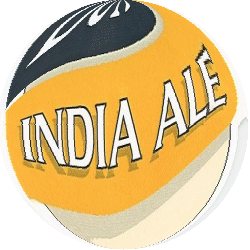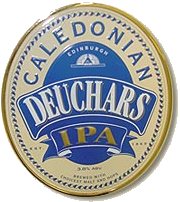 |

|
|

|
|
|
 |

home
about
features
A-Z
books

|

|

features
|

| |
the origins of the species
by Willard Clarke, 12/05
Is it time to re-evaluate the origins of two 19th-century beer styles, India Pale Ale and Pale Ale? One veteran Scottish brewer, who has recently launched a beer called Edinburgh Pale Ale to critical acclaim,
thinks the time is ripe.
According to all official histories of the brewing industry, the roots of IPA lie in London and Burton-on-Trent. But Russell Sharp, who ran the Caledonian Brewery for many years, believes that the first home of pale
was Edinburgh.
The received wisdom is somewhat different. A beer called 'India Ale' was brewed at Bow Bridge in east London from the 1780s by George Hodgson and his son, Mark. Their brewery was close to the East India Docks,
from where sailing ships left for India, laden with goods -- including food and drink -- which were sold on the sub-continent by the East India Company.
The Hodgsons, as far as anyone can tell, were the first to use pale malt, a type made possible by the new technologies of the industrial revolution, in particular the curing of malt in coke-fired kilns. Before coke
was invented, malt was cured by wood fires and the result was brown malt and brown beer.
|
|

|
We know that Hodgson's beer was truly pale because its colour was reproduced by brewers in Burton in the 1820s. Mark Hodgson had annoyed the East India Company by not paying his bills and a director of the
EIC appealed to the great Burton brewer Samuel Allsopp to force Hodgson out of the India trade by making his own version of India Ale.
According to legend, Allsopp's head brewer spat out a sample of Hodgson's beer, affronted by its bitterness. But he agreed nevertheless to reproduce it, making a tiny batch in a teapot. Burton, with its hard, flinty
brewing water, rich in natural salts, was ideally placed to brew pale beer and within a decade Allsopp, Bass, Worthington and other brewers in the town were exporting prodigious amounts to India.
When samples of India Pale Ale found their way on to the British market, there was a clamour for it, in particular from the new middle class of office workers, teachers and civil servants. They were anxious to
distance themselves from the working class and their dark milds and porters and seized on the new and more expensive pale beer style.
But IPA, high in alcohol and hops to withstand the long sea journey to India, was too strong for British drinkers. The result was a scaled-down version, with less alcohol and hops, that was called simply
Pale Ale and was the forerunner of the style known as Bitter that developed early in the 20th century.

|
|
The success of the new pale beers, the export versions in particular, encouraged the Scots to develop their interpretations of the style.
Brewers in Edinburgh, with hard water that sat on a
volcanic rock, were best suited to reproduce the pale beers of Burton. Some - such as Robert Deuchar, whose IPA lives on at Caledonian and was designed by Russell Sharp - brewed exceptionally pale beer in the
English fashion. But most Scottish brewers called their slightly darker beers Export, of which the most famous was McEwan's.
|
Russell Sharp, who has set up the Edinburgh Brewing Company to market his new beer, which is brewed by Belhaven until he builds his own site, has turned history on its head. Advised by Charles McMaster, the
leading historian of the Scottish brewing industry, he believes that pale ale was brewed much earlier in Edinburgh than has previously been thought.
The inspiration for his new beer is one first brewed in 1821 by Robert Disher, who opened a brewery in the Canongate in the Scottish capital and launched an Edinburgh Pale Ale with great success.
I suspect many brewers and historians will contest Russell Sharp's version of the development of IPA and Pale Ale. If such a debate encourages greater interest in the style, that can only be good.
Russell's EPA got off to a flyer, winning top prize at CAMRA's Scottish Beer Festival in June. On a trip to Edinburgh two weeks ago, every pub reputed to stock the beer had sold out. Perhaps someone has
hijacked supplies and exported them to India.
|
|
home
about
features
A-Z
books
|

